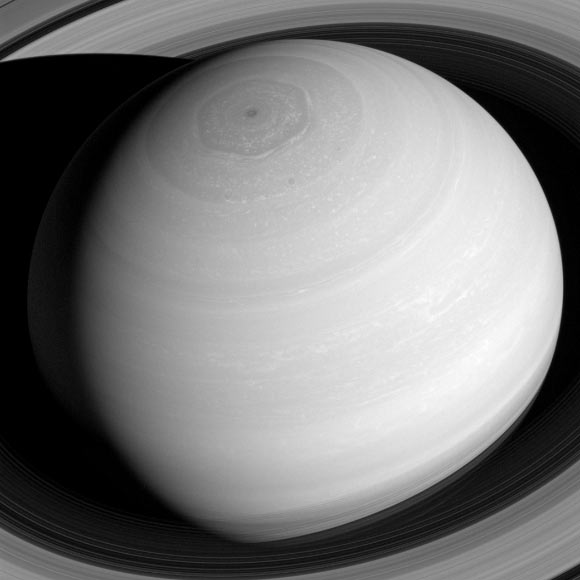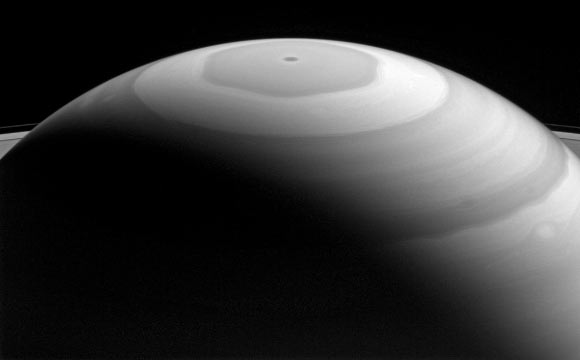New near-infrared images of Saturn from NASA’s Cassini spacecraft show the northern polar region including the hexagon and polar vortex.

The north polar region of Saturn is pictured in great detail in this Cassini image obtained on July 16, 2016 from a range of one million miles (2 million km). The image was taken with Cassini’s wide-angle camera using a spectral filter which preferentially admits wavelengths of near-infrared light centered at 752 nm. The view looks toward the sunlit side of Saturn’s rings from about 41 degrees above the ring plane. Image credit: NASA / JPL-Caltech / Space Science Institute.
The north polar region of Saturn displays its beautiful bands and swirls, which somewhat resemble the brushwork in a watercolor painting.
Each latitudinal band represents air flowing at different speeds, and clouds at different heights, compared to neighboring bands.
Where they meet and flow past each other, the bands’ interactions produce many eddies and swirls.
The northern polar region is dominated by the famous hexagon shape which itself circumscribes the northern polar vortex — seen as a dark spot at the gas giant’s pole — which is understood to be the eye of a hurricane-like storm.

This image was taken with Cassini’s wide-angle camera on Sept. 5, 2016 using a spectral filter which preferentially admits wavelengths of near-infrared light centered at 728 nm. This view looks toward the sunlit side of the rings from about 20 degrees above the ring plane. The view was obtained at a distance of approximately 890,000 miles (1.4 million km) from Saturn. Image credit: NASA / JPL-Caltech / Space Science Institute.
Planetary scientists think the hexagon might act as a barrier that prevents haze particles produced outside it from entering.
During the polar winter night between November 1995 and August 2009, Saturn’s north polar atmosphere became clear of aerosols produced by photochemical reactions — reactions involving sunlight and the atmosphere.
Since Saturn experienced equinox in August 2009, the polar atmosphere has been basking in continuous sunshine, and aerosols are being produced inside of the hexagon, around the north pole, making the polar atmosphere appear hazy today.
Other effects, including changes in atmospheric circulation, could also be playing a role.
Researchers think seasonally shifting patterns of solar heating probably influence the winds in the polar regions.







